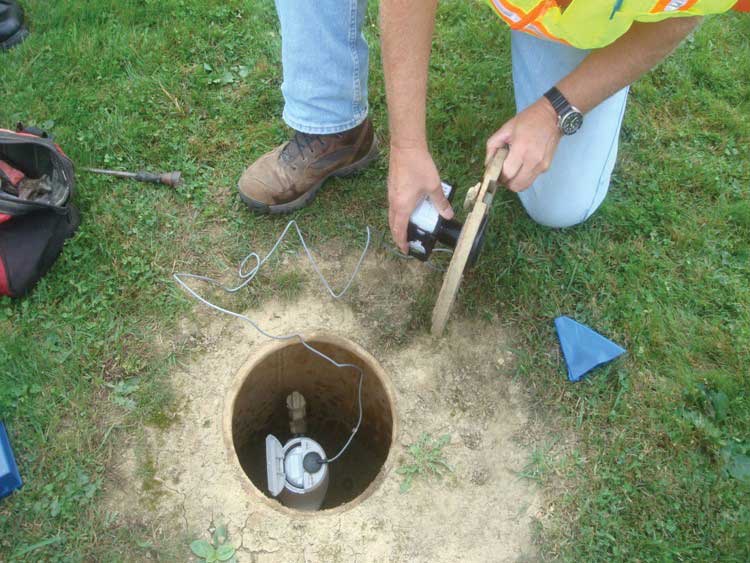Non-Revenue No More: West Virginia Utility Gets Strategic with AMI
Published on by Water Network Research, Official research team of The Water Network in Case Studies
By Dan Pinney
Non-revenue water (NRW) is a longstanding issue that continues to be a thorn in the side of many utilities. For decades, utilities have struggled with 20-30 percent water loss due to leaks, emergencies or other factors. NRW can impact the utility’s business with the potential to affect everything from operational budgets to customer service.
Fortunately, forward-thinking utility managers use technology to help address NRW. Innovations in metering, measurement, communications and analytics produce real results in managing NRW by identifying the sources of unintended water loss and reducing it. If implemented correctly, the right system will provide improvement in revenue capture and cost saving opportunities.
To improve upon NRW and convert it into revenue, utilities should take a strategic approach in addressing water loss. In this case study, we’ll explore how one utility, the City of Fairmont, was able to reduce excess water usage by 25 million gallons per year using an advanced metering infrastructure (AMI) system.
Facing the Challenge
Nestled in the rolling hills of northern West Virginia, collegiate life reigns supreme in the City of Fairmont, which is home to Fairmont State University and just 20 miles away from the University of West Virginia. As with any college town, residential turnover is the norm, with the constant move-ins and move-outs straining the city’s water utility resources.
“We serve many rental properties and apartments, so there’s a lot to manage in terms of monitoring customer usage and handling inactive accounts,” says Mark Moore, utility controller, City of Fairmont Utilities. “Additionally, it can be challenging to keep non-revenue water to a minimum while ensuring the best possible service to our customers.”
Opportunity for Better Efficiency
Amid the hustle and bustle, the process for reading meters and managing customer billing grew inefficient. The metering system used by City of Fairmont Utilities required technicians to walk or drive by each of its 14,500 water meters for readings and then track them with a handheld device for billing. This meant that meters could only be read occasionally, and leaks or undetected water use might run for weeks.
In conjunction with the West Virginia Public Service Commission, the utility decided a complete upgrade to an AMI solution was necessary to tackle the issue of NRW and to better meet customer needs.
“With AMI, we knew that we’d be able to get information from our meters in a timely way,” says David Sago, utility manager, City of Fairmont Utilities. “The solution would allow the utility to dramatically improve our efforts to derive revenue from the water we were delivering while also taking boots off the ground and devoting those resources to other important functions.”
Bringing the Vision to Life
City of Fairmont Utilities set out to put its plan for a smart water solution into action. The water utility team needed the solution to:
- Reduce human error and estimation in meter readings
- Enhance leak detection efforts
- Monitor unconventional and/or inactive accounts
- Empower customers to view their usage and identify issues in real-time
- Aid in budgeting for water conservation and cost savings
After a thorough evaluation process, the utility determined that a smart utility network from Sensus addressed those needs.
Implementing a Smart Water Network
Working with a distributor partner, City of Fairmont Utilities initially installed 6,500 Sensus water meters covering its two largest routes, with the intention to roll out the full solution over a five-year period. However, the benefits were realized so quickly the utility decided to shorten the implementation timeframe.
“The impact of our Sensus AMI solution was so immediate that we installed the rest of the meters right off the bat,” says Moore.
The solution included 14,500 Sensus iPERL residential meters and a combined 200 OMNI Compound (C²) and OMNI Turbo (T²) commercial meters. The utility bolstered its deployment with Sensus FieldLogic and Regional Network Interface (RNI) software, delivered via the Sensus Software as a Service (SaaS) platform. Finally, the Sensus FlexNet communication network and Sensus Analytics served as the backbone of the utility’s smart water network, enabling Fairmont to remotely monitor water usage and increase billing accuracy for customers across the region.
Immediate and Lasting Impact

The solution implemented by Fairmont included 14,500 Sensus iPERL residential meters and a combined 200 OMNI Compound (C²) and OMNI Turbo (T²) commercial meters.
Upon launch, City of Fairmont Utilities quickly learned that approximately 15 percent of its old meters were failing to provide accurate readings, and multiple meter pit locations needed renewal.
“It used to be an exhaustive process for staff to track and evaluate our meters across the five counties we serve,” says Moore. “The Sensus AMI solution took care of this immediately, allowing us to virtually track and monitor metering performance in even our most rural locations.”
Media
Taxonomy
- Non-revenue Water
- Smart Metering (AMI)
